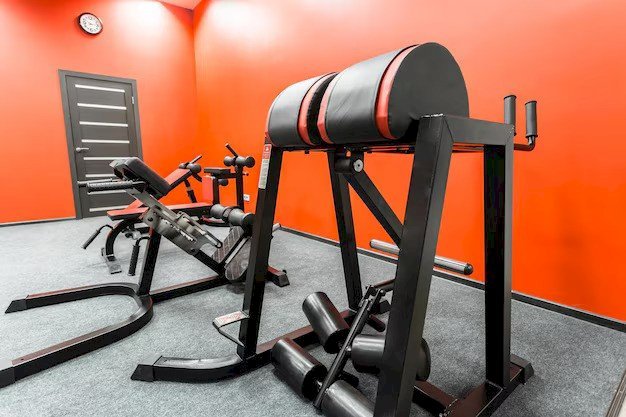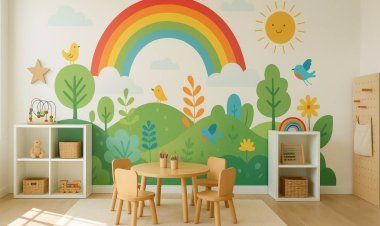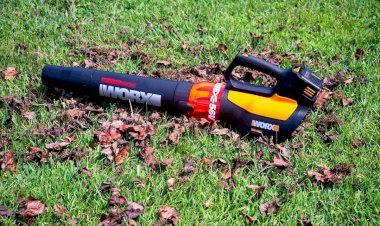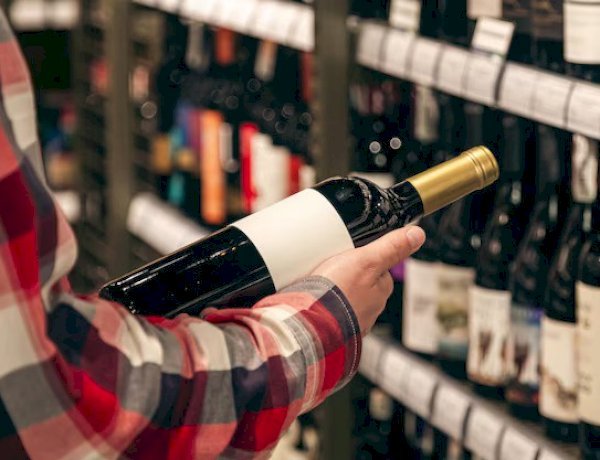Essential Gym Equipment 2025: Smart & Safe Fitness Guide
Discover the ultimate 2025 guide to essential gym equipment — from barbells and benches to protective gear like drop pads for a safer, smarter workout space.

The global fitness equipment market is on track to exceed $30 billion by 2034, showing how fitness has evolved from a hobby into a lifestyle. In this complete 2025 guide, discover the essential gym equipment you truly need — from strength and cardio machines to innovative protection tools that safeguard your gym’s foundation and long-term performance.
Building the perfect gym isn’t about owning every machine — it’s about choosing the right balance of performance and protection. Whether you’re lifting in a commercial facility or training at home, knowing what qualifies as essential gym equipment helps you invest wisely and train safely.
From barbells and benches to floor protection tools like drop pads, every item plays a role in how efficiently you perform and maintain your space.
The Global Fitness Equipment Boom

Image source: Pinterest.com
The fitness equipment industry has never been stronger. In 2024, it was valued at $14.42 billion, expected to reach $18.91 billion in 2025, and projected to surpass $30 billion by 2034, growing around 6 % CAGR.
The home gym segment is driving much of this growth, forecast to expand from $12.8 billion in 2025 to nearly $20 billion by 2032, while commercial gyms collectively represent more than $9 billion in annual sales. Even specialized items such as crash or drop pads are surging; that niche alone is set to almost double to $2.36 billion by 2032.
What Makes Equipment “Essential”?

Image source: Pinterest.com
The term “essential” doesn’t mean “expensive” or “trendy.” It means:
-
It supports fundamental lifts such as squats, deadlifts, presses, and pulls.
-
It ensures safety and structural protection.
-
It withstands heavy, repeated use and can evolve with your setup.
A truly complete gym combines performance tools with smart safety and protective elements.
Strength and Resistance: The Core of Every Gym

Image source: Pinterest.com
Barbells, plates, dumbbells, and benches remain the foundation of all gyms. A quality Olympic barbell (190 000–215 000 PSI tensile strength) paired with bumper plates allows lifters to train heavily and safely. Dumbbells offer unilateral balance and variety, while adjustable versions save space in home gyms.
An adjustable bench adds range for presses and step-ups, and a sturdy rack provides structure for squats, pulls, and overhead work. Together, these pieces form the skeleton of every strength setup.
Protecting Your Gym’s Foundation: Flooring and Impact Control

Image source: Pinterest.com
Your gym’s floor quietly takes more punishment than any other surface. Without adequate protection, even concrete can crack, and wooden subfloors can warp.
Rubber flooring is the universal starting point; its traction, resilience, and shock absorption make it indispensable. For moderate training, 15 mm thick mats work well; for powerlifting or Olympic work, use 20–25 mm.
Yet rubber alone doesn’t eliminate vibration or noise. That’s where drop pads come in. These dense foam cushions, sealed in durable vinyl, absorb the energy from dropped barbells, cutting sound levels by up to 60 % and preventing barbell bounce. Many include air-release vents and non-slip undersides for safety.
For lifters training in apartments or on upper floors, drop pads transform heavy lifting into a quiet, neighbour-friendly routine. They also extend the life of both flooring and weights — a smart investment in long-term gym health.
Safety Equipment: The Backbone of Responsible Training

Image source: Pinterest.com
Safety infrastructure defines professional gyms. Power racks with spotter arms catch failed reps; lifting belts stabilize the core; and collars secure plates against dangerous slips. Crash mats and platform guards add a secondary layer of protection for Olympic movements.
Regular inspection — every few months for home gyms, monthly for commercial setups — ensures hardware remains stable and padding intact. Preventive maintenance saves both money and injury.
Functional and Conditioning Tools

Image source: Pinterest.com
Today’s fitness routines blend strength with movement. Medicine balls build rotational power, battle ropes challenge endurance, and resistance bands improve mobility. Kettlebells and sandbags introduce instability that forces total-body coordination.
These lightweight, multipurpose tools turn limited spaces into dynamic workout zones and complement heavier strength work.
Cardio Equipment: The Pulse of the Gym

Image source: Pinterest.com
Cardio machines are central to any balanced routine. Treadmills, stationary bikes, and rowers dominate usage worldwide. In 2025, surveys show over 40 % of home gym owners own at least one cardio device. Smart connectivity — Bluetooth tracking, virtual routes, and training apps — has become standard, bridging the gap between data and daily motivation.
Compact options like jump ropes, steppers, or foldable bikes let small spaces deliver big results.
Noise Control and Comfort Essentials

Image source: Pinterest.com
Acoustic management isn’t cosmetic — it protects your space and peace of mind. The quietest gyms combine rubber flooring, strategic placement of drop pads, and wall or ceiling panels that absorb echo.
Equally crucial are lighting, mirrors, and ventilation. Bright light promotes alertness; mirrors aid technique; airflow regulates temperature and extends equipment life. Comfort enhances performance.
Cost, Durability, and Return on Investment

Image source: Pinterest.com
Quality gear costs more upfront but pays back through reliability. Drop pads priced between $80 – $300 prevent thousands in potential floor or barbell repairs. Likewise, thick flooring, sturdy racks, and corrosion-resistant metalwork last years longer than budget counterparts.
Think of equipment as infrastructure, not décor: durable materials equal lower lifetime costs and better resale value.
Building a Home Gym: Strategy That Works

Image source: Pinterest.com
Start with a clear plan and use every inch efficiently. Dedicate a lifting zone with rubber flooring and drop pads, a cardio corner for movement, and a smaller mobility space for stretching. Keep walkways clear and storage vertical.
A basic yet powerful home gym begins with a barbell, plates, bench, and rack. Expand gradually with cardio and functional tools. Regular cleaning and inspection maintain hygiene and safety.
Conclusion
The definition of essential gym equipment keeps evolving, but the goal remains constant: strength, safety, and sustainability. Barbells and benches build performance; flooring and accessories like drop pads protect that investment.
Whether your gym occupies a spare room or an entire facility, choosing equipment that balances power with protection ensures you can train harder, safer, and longer.
FAQs
1. What are drop pads used for, and do I really need them?
Drop pads (also called crash pads or impact pads) absorb the shock and vibration when heavy weights or barbells are dropped, protect your flooring and equipment, and reduce noise. They’re especially valuable in apartments, upper floors, or shared buildings where noise and floor damage are major concerns.
2. How thick should drop pads be for heavy lifting?
Most quality drop pads are in the range of 5 to 6 inches thick (about 12–15 cm). Thickness and foam density matter: thicker and denser pads do better at absorbing force and controlling bounce.
3. Can I use both rubber flooring and drop pads together?
Yes — that’s actually the ideal combination. Rubber flooring offers general shock absorption over a wide area, while drop pads handle localized impact under heavy lifts. When your rubber surface is thinner, drop pads serve as a vital backup.
4. What materials are drop pads made from?
Typically, drop pads are constructed using high-density foam cores encased in tough outer materials like vinyl or reinforced PVC. Many designs include air-exhaust vents to control pressure on impact and non-slip surfaces underneath.
5. Do drop pads reduce noise significantly?
Yes — good quality drop pads can reduce impact noise by a large margin (some users report reductions of 30–60% or more). For heavy lifts like Olympic movements, they often make the difference between a usable home gym and one that annoys neighbors.
6. How many drop pads do I need for my lifting setup?
It depends on your layout and lifting style. Usually, two pads (one front, one back) are a starting point. If you have overhead lifts or multiple racks, you may want four or more arranged in your “drop zones.”
7. Can drop pads damage my form or limit movement (e.g. in a deadlift)?
When properly chosen (with correct height, density, and stability), well-designed drop pads shouldn’t negatively affect your form. But if pads are too soft or thick, they might alter bar positioning slightly — it’s important to test and ensure stable contact before lifting heavy.




























